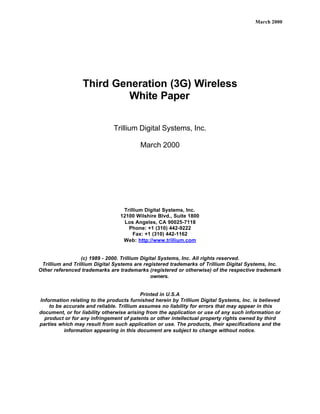This document provides an overview of 3G wireless technology and the transition from 2G to 3G networks. It describes how 2G networks only support limited data capabilities around 9.6 kbps, whereas 3G aims to support high-speed multimedia services. It also outlines the technologies enabling the transition, including 2.5G technologies like GPRS and EDGE that increase data rates to 384 kbps. Finally, it provides a high-level description of the GPRS network infrastructure and protocols.


















